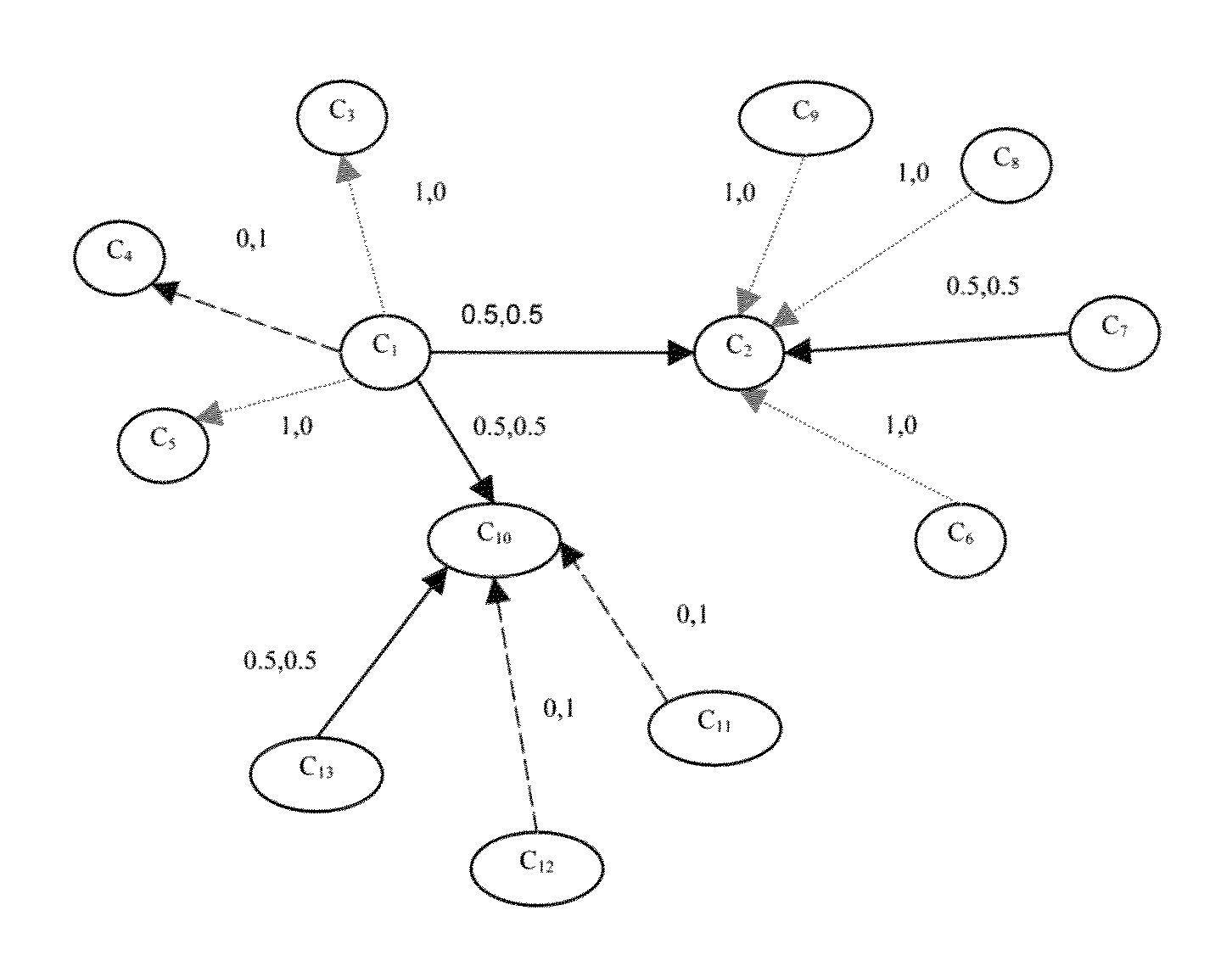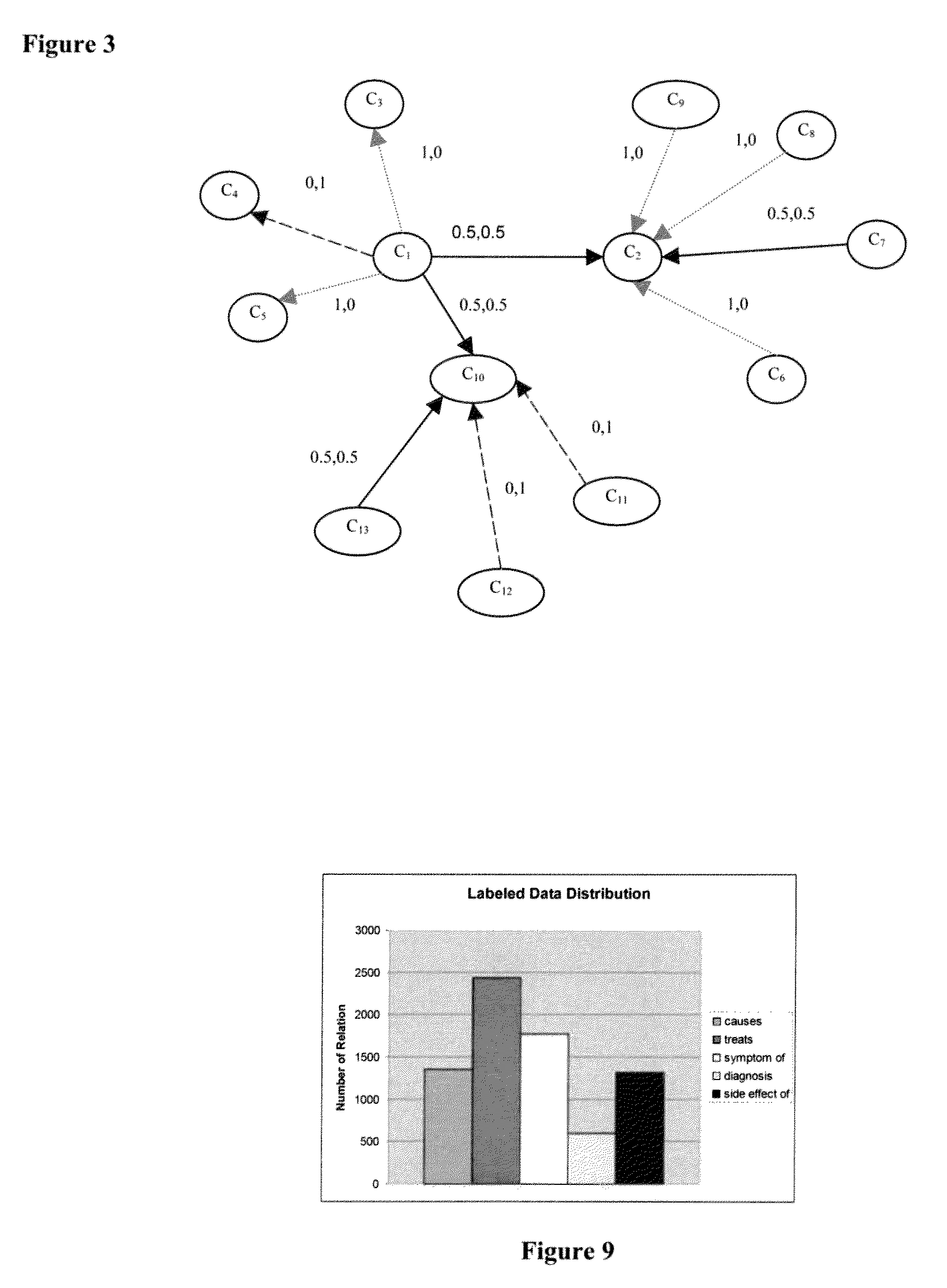System and method for creating and searching medical ontologies
a technology of ontology and search system, applied in the field of automatic creation of medical ontologies, can solve the problems of increasing the complexity of the medical domain, reducing the efficiency of medical resources, and lack of formal way to access and combine knowledge from different ontologies, so as to reduce the amount of work required, the effect of high performan
- Summary
- Abstract
- Description
- Claims
- Application Information
AI Technical Summary
Benefits of technology
Problems solved by technology
Method used
Image
Examples
experimental setting
[0108]In order to test a method according to an embodiment of the invention for automatically creating a medical ontology, Wikipedia was used as a test case, even though the methodology could be applied to any other wiki-like resource. It is desired to create an ontology of causes, treatments, symptoms, diagnoses and side effects.
[0109]A method started by selecting all the concepts contained in the list of diseases article, which contains 4000+ diseases and syndromes, then expanding the article set to include all the articles that linked or were linked to by any of the articles contained in the current set.
[0110]Next, the feature extraction process was performed followed by the bootstrapping procedure. The results were manually checked to create a gold standard set. This resulted in an ontology with 4308 concepts and 7465 relations divided. FIG. 9 is a table that shows the distribution of relation labels for this ontology.
[0111]Experiments were performed using a small percentage of ...
PUM
 Login to View More
Login to View More Abstract
Description
Claims
Application Information
 Login to View More
Login to View More - R&D
- Intellectual Property
- Life Sciences
- Materials
- Tech Scout
- Unparalleled Data Quality
- Higher Quality Content
- 60% Fewer Hallucinations
Browse by: Latest US Patents, China's latest patents, Technical Efficacy Thesaurus, Application Domain, Technology Topic, Popular Technical Reports.
© 2025 PatSnap. All rights reserved.Legal|Privacy policy|Modern Slavery Act Transparency Statement|Sitemap|About US| Contact US: help@patsnap.com



